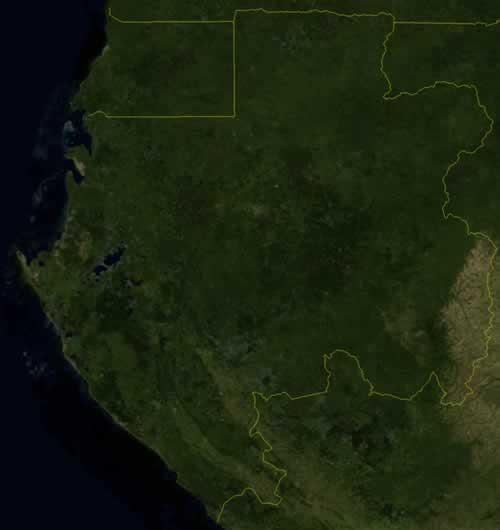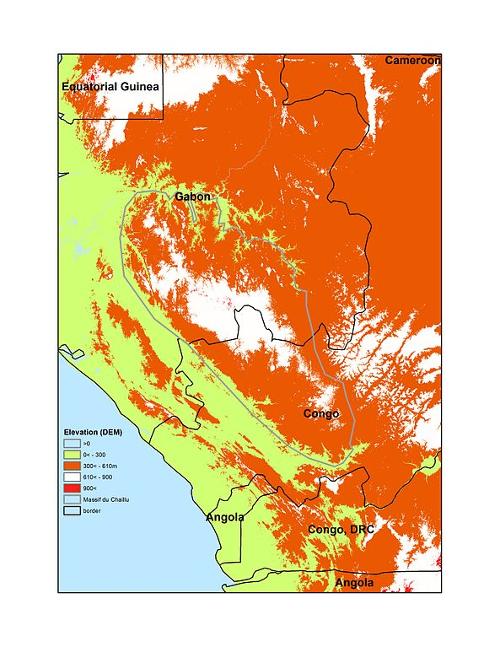GABON
Geography and Landscape

Geography and Landscape
| Basic information | |
| Official language | French |
| Capital | Libreville |
| Area | 267.667 km² |
| Population | 2,313,439 (2021) |
| Currency | CFA-franc (XAF) |
| Web | .ga |
| Code. | GAB |
| Tel. | +241 |
Geography and Landscape
Geography
Gabon is located in West Africa. Gabon borders the Atlantic Ocean at the Equator and lies between Equatorial Guinea and Congo. Gabon also borders Cameroon. The surface area of Gabon is 267,667 square kilometres.
Landscape
The 800 km long coastal strip has many palm-fringed bays and lagoons, bordered by mangroves in the south. Dense rainforest covers the high plains of the interior, with the Chaillu massif in the middle of the country. Here you will find Gabon's highest peak, Mount Iboundji (1575 metres).
 Chaillu massif Gabon/Congo-BrazzavillePhoto: Mleal001 CC 3.0 Unported no changes made
Chaillu massif Gabon/Congo-BrazzavillePhoto: Mleal001 CC 3.0 Unported no changes made
In the northeast are the Cristal mountains - in the south and east the rainforest changes into savannah landscape. The main river is the Ogooué River, which splits the country in two from east to west and flows into the ocean at the port of Port-Gentil.
Climate and Weather
Gabon has a tropical climate. It is hot and humid. The average daytime temperature is 27 degrees Celsius all year round. The dry season runs from May to September, but even in this period the humidity remains high. In the other months, it rains a lot, especially from January to April. In the capital Libreville, the average annual precipitation is 3050 millimetres.
Plants and Animals
Plants
Two thirds of the country is covered by impenetrable rainforest. There are many different plant species, including the Gabonese mahogany tree and the unique okoumé tree. These trees form the basis of the Gabonese hardwood industry. Logging is a major problem and is being tackled by the government with international support.
Animals
In the jungle live gorillas, mandrills, snakes, crocodiles, hippos, butterflies, insects and dozens of colourful bird species. This jungle is difficult to penetrate. Easier accessible are the grass savannahs where elephants, antelopes and buffaloes live.
Sources
Elmar Landeninformatie
CIA - World Factbook
BBC - Country Profiles
Copyright: Team The World of Info